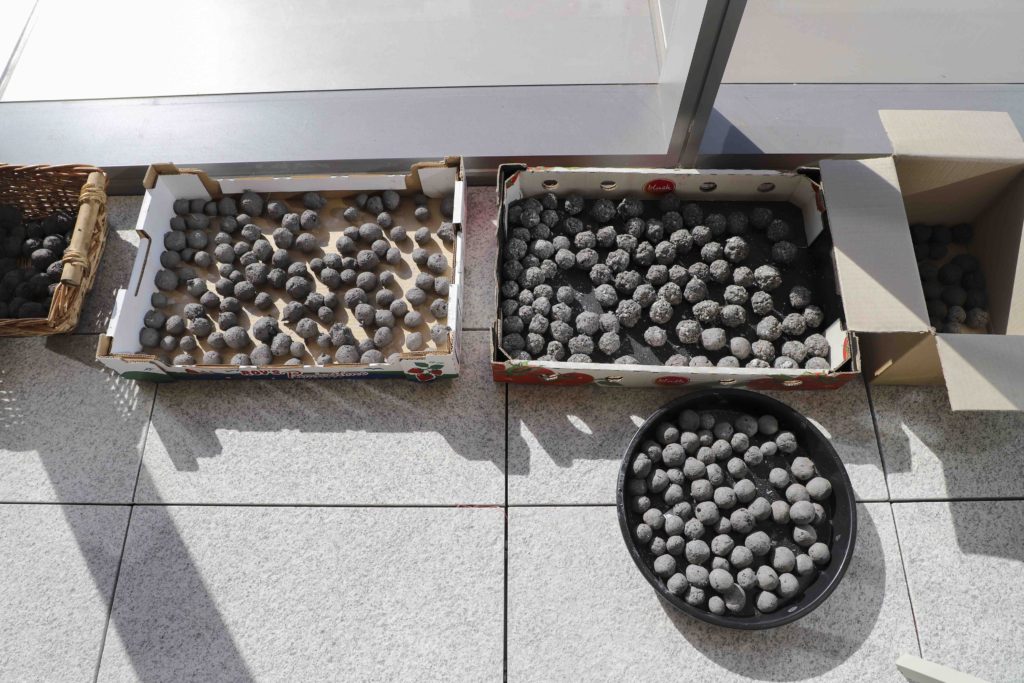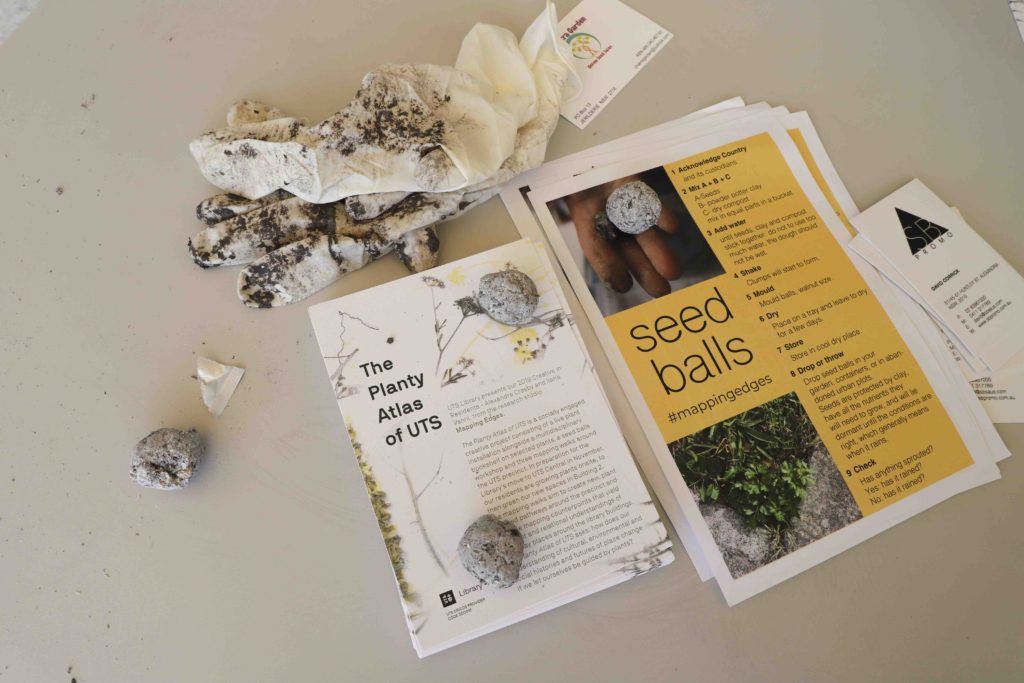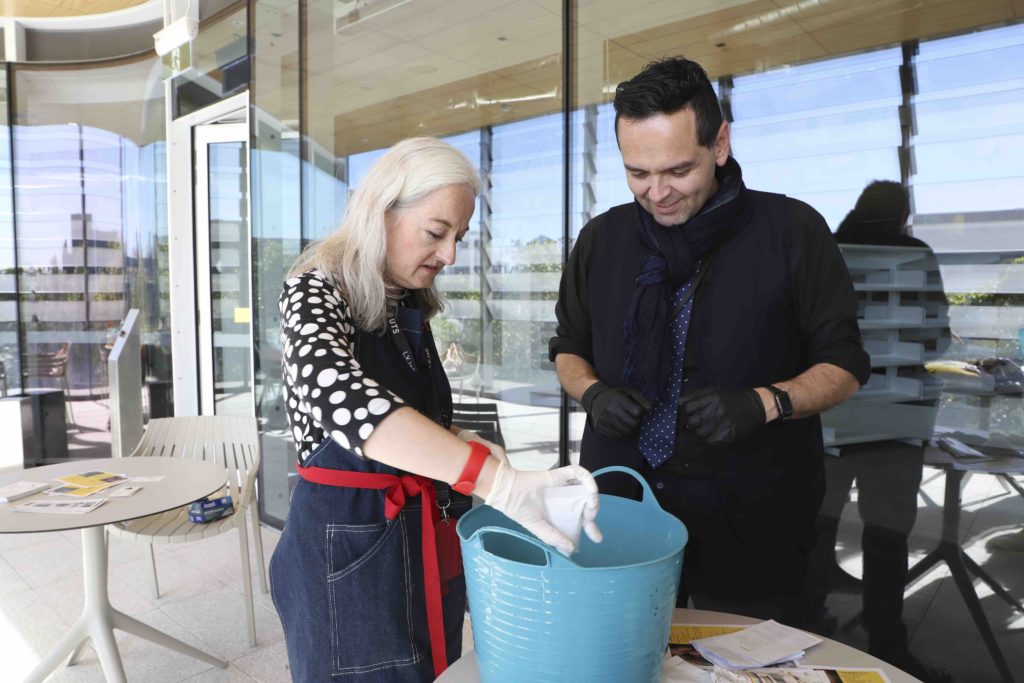In September, Mapping Edges ran the first event in the not-yet-open new UTS Central Library by throwing dirt, compost and seeds around the shiny clean winter terrace.
People who like plants know that getting your hands dirty is a good way to learn about the our environment. In this workshop we shared knowledge on how to make seed balls. Seed balls are used to ‘seed bomb’ urban areas to regenerate plant growth.
“The poetry of the seed ball concept is simple, yet immense. Encase a seed in a protective jacket of clay, creating a seed ball. Distribute seed balls across the ground, not worrying if this day, or this month even, is the best time to ‘sow’. Protected from insects, birds, heat and sunlight until the time is right, the seed ball activates with a rain event. But only a rain event that is sufficient to soak through the clay coating to germinate the seed. And that’s it. But that’s not all.”
Kirsten Bradley, “Seed Bomb.” Artlink 30 (2010): 65–67
We also made seed balls in a previous creative residency with Walking Lab, you can read about that here.
Once the UTS seed balls dried, they were scattered in a walk of the UTS precinct the following week.
Photos by Karina Glasby





0 Comments